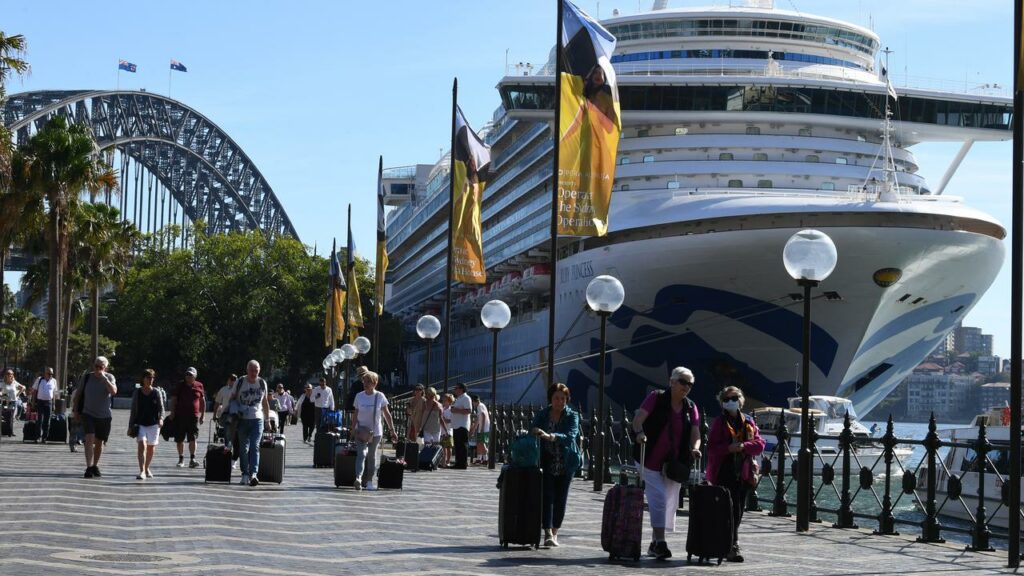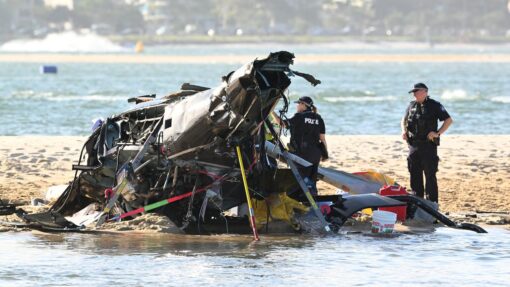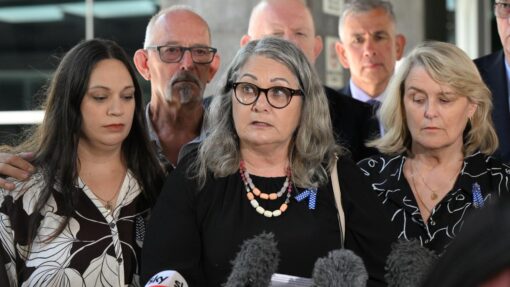Ruby Princess’s COVID-19 source disputed
Mark Steene |

The cruise line operating the Ruby Princess rejects allegations that a man at the centre of a COVID-19 class action was infected on the ship.
Trent March, representing the cruise line, told the Federal Court on Thursday it believed Henry Karpik was already infected before he boarded the ship in Sydney Harbour on March 8, 2020.
Mr Karpik is the husband of Susan Karpik, who is the lead plaintiff in the class action against Australian charter company Carnival and the ship’s operator, Bermuda-registered Princess Cruise Lines.
She’s claiming damages, alleging the cruise line failed in its duty to take reasonable care of the passengers.
A key plank in her claim is the illness of her husband and his ongoing care.
Mr March told Justice Angus Stevens during legal argument over the admissibility of evidence from witnesses, that Mr Karpik reported symptoms on March 12.
He said the cruise line had expert evidence that the timing of those symptoms indicated Mr Karpik was COVID-positive but possibly symptom-free before he boarded.
The court has already heard there were no positive cases in the Wollongong area, where the Karpiks live, before the day they boarded the Ruby Princess.
Mrs Karpik alleges she also caught COVID on the cruise, likely from her husband of 50 years.
The couple is among the 663 positive cases reported among the 1679 Australians on board the cruise. Twenty-eight people died from the outbreak aboard.
The Ruby Princess had sailed from Sydney Harbour for New Zealand on a 13-day round trip, but returned 11 days later, when the federal government closed Australia’s borders in the early days of the pandemic.
In chaotic scenes on its arrival, coughing and spluttering passengers could be seen leaving the ship, desperate to get home.
Mr Karpik presented to the ship’s medical room on March 16 or 17, but his condition continued to worsen.
The couple travelled home when the ship docked on March 19. Mr Karpik was taken to the Wollongong Hospital on March 21, and intubated and placed in an induced coma the following day.
He was in that coma for four weeks and ultimately released from hospital on May 16.
Mrs Karpik’s case alleges he still requires extensive care and suffers ongoing debilitating conditions.
The companies operating the cruise have asked the plaintiff’s lawyers to prove where the outbreak came from – whether it was a passenger or a member of the crew.
Earlier David McLure SC, also for the cruise line, said it disputed the allegation the primary source of the infection was a crew member.
Mr McLure said the plaintiff’s case was the outbreak came from a crew member, held over from a previous Ruby Princess cruise that docked on the morning of March 8, in which several people were seen with COVID/flu-like symptoms.
But he said testing of those passengers did not reveal influenza or COVID, which he said the plaintiff incorrectly argued should be interpreted as COVID cases.
“The respondent’s experts say … there was a small, well-managed influenza outbreak,” he told the court.
“That view is supported in part by the fact NSW Health undertook nine COVID swabs, all of which returned negative results.”
Ian Pike SC, for lead plaintiff Susan Karpik, said the cruise line’s demand at this late stage for the plaintiff to prove where the outbreak came from was too prejudicial.
The onus, he said, should not be on the plaintiff to prove how COVID got on the ship.
Mrs Karpik had been on eight previous cruises, and Mr Pike said she signed up because she trusted the cruise line to look after her.
“Why did she go on the ninth? Because she thought it was safe,” he said.
The case continues.
AAP


